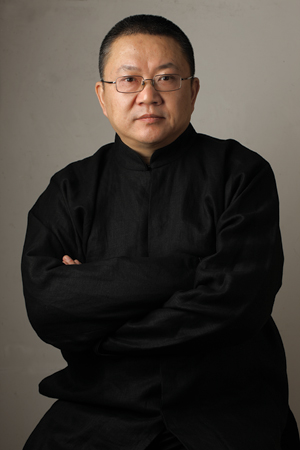

Take a look at this Floor Plan for a Typical configuration of an Eichler Home... Very unique concept of the Central Atrium...
What Makes an Eichler?
Though there are a number of different floor plans, the exteriors of Orange’s Eichler homes are similar enough to be easily identified. (Take a look at some Eichler floor plans at www.eichlersocal.com.)As Lynn and John O’Dell explained in their Oct. 23, 1993 Los Angeles Times article, “Off the Beaten Track,” Eichlers “don’t look at all like the surrounding ranch-style houses from the same time period: the view from the curb is of thin, low-peaked roofs and long, flat wood facades with a glaring lack of front-facing windows.” Add to that the just-outside-the-front-door carport that many Eichlers boast, and you have a good idea what to look for.
Eichler interiors offer even more distinctive characteristics.
Post-and-Beam Structure:
Skip Walton, who lives in an A. Quincy Jones-designed home in Fairmeadow, remembers riding his bike to Orange from western Orange County simply to look at the Eichler tracts. “I just fell in love,” he says simply.
His parents chose not to buy one, but as a young husband Walton finally became the proud owner of an Eichler, which he has kept in virtually the same condition as it was when he bought it. (His kitchen even has the original swing-out table that swings out 90 degrees from its position against the counter, and extends to reveal the extension leaf it stores within.)
To his mind, part of the charm is the simple post-and-beam architecture characteristic of Eichler homes. “I love the honesty,” Walton says. “The beam you see is the beam that holds up the roof, not a fake one.”
Atrium:
Though atriums are considered an integral part of the Eichler experience today-emphasizing the homes’ porous boundary between indoors and outdoors-early Eichler homes did not include them. Once architect Robert Anshen introduced the idea and A. Quincy Jones modified it, though, it caught on immediately.
“For some time we still did not understand why people were so attracted to this concept,” recalls Ned Eichler, son of Joe, in Eichler Homes: Design for Living. “After visiting many owners, we confirmed our original view that the atrium had little practical use. Nevertheless, it had an enormous impact…. One of the main criticisms of an Eichler Home had been its minimal and unassuming entry. Inadvertently, we had solved the problem. Now, after approaching a still relatively austere Eichler Home and opening the front door, one was met with a surprise-an enclosed courtyard….”
In Fran Karnes’ Claude Oakland-designed house in the Fairhills tract, the atrium is not located immediately inside the front entrance, but in the center of the living area. A large cork oak tree grew there for years, until its massive roots began damaging the floor of the house. Karnes recalls a time she could string up a hammock inside the atrium.
“I still get a thrill every time I look at these houses,” says Karnes, the original owner of her house. “I’m just thrilled to see a house can be so beautiful.”
Glass:
The floor plans may differ, but in most Eichlers you can see in one end and out the other. Karnes can sit at her dining table and look through the glass walls of the atrium to the living room, through the living room windows into the backyard.
“These houses have depth,” says Verna Samhammer. A resident of the Fairhills tract, she and her husband Claire have documented the homes in all three Orange tracts. “You can stand in the front yard and see all the way to the back fence,” she says. It’s all part of the indoor-outdoor living that these houses so advocate-and that’s a major attraction to Eichler devotees.
“[It’s amazing] to be in a place where you could live as though you’re outside,” enthuses Fairhaven resident Craig Opsahl. “I didn’t know this was a big part of history. I just saw it and wanted it.”
Minimal interior walls:
“Barrier-free living,” Fairhaven resident Tracy Ettinger describes it.
Walls of clear glass-scarcely walls at all, if you look at them imaginatively-separate indoors from outdoors; Eichler homes also have few interior walls. In Walton’s home, visitors can see that the kitchen opens onto the family room, separated only by the waist-high structure that contains the cook top; and it is separated from the dining room by a wall that does not stretch all the way to the ceiling.
Dave McDonald and John Peterson removed one of the walls in their Fairhaven home to increase the feeling of openness, and McDonald comments that even the board ceilings contribute to that sense of outdoorsy freedom. “It’s like being on a boat,” he says.
Eichler and his Homes
As son Ned Eichler recalls in Eichler Homes: Design for Living, his father had had no interest in architecture until the family moved into a Frank Lloyd Wright-designed house in the early 1940s. Their stay in the rented home was only a few years long, but it changed the path of Joe Eichler’s life. When the family egg-and-dairy business was sold, and Eichler had time and money on his hands, he entered into a partnership with two young engineers who had begun a business prefabricating small houses.A year after Eichler had bought out his partners, a real estate broker suggested that he buy enough lots in Sunnyvale, Calif., to build a tract; but his first tract houses, built in 1947, were conventional designs. It wasn’t until late 1948 that architect acquaintance Anshen, a Wright disciple, suggested that Eichler offer something different.
“How can someone like you, who loves real architecture, build this crap?” According to Ned Eichler, Anshen’s words sparked the Eichler revolution.
Joe Eichler paid Anshen $2,500 to design three plans for three-bedroom, one-bath, 900-square-foot houses. All of them featured redwood siding, paneling, post-and beam ceilings, floor-to-ceiling glass on the rear façade, open-interior planning, and radiant-heated concrete floors.
The Architects
Anshen’s first designs were the basis for more than 10,000 homes built during Eichler Homes, Inc.’s first 18 years. After an argument about money in 1953, Anshen and Eichler went their separate ways (temporarily), and architect A. Quincy Jones was hired by Eichler Homes. Later, Claude Oakland (who had previously worked for Anshen & Allen) joined the roster of Eichler architects. Eichler-owners may not always know the name of their floor plan off the tops of their heads, but most can tell you immediately whether it is an Anshen & Allen, Jones & Emmons, or Claude Oakland Associates design.
IF YOU ARE INTERESTED IN VISITING THE WEBSITE THAT POSTED THIS ARTICLE... PLEASE GO TO http://www.cityoforange.org/localhistory/eichler/eichler-02.htm
 We are so proud of our Friends!.. Please check it out!
We are so proud of our Friends!.. Please check it out!




















